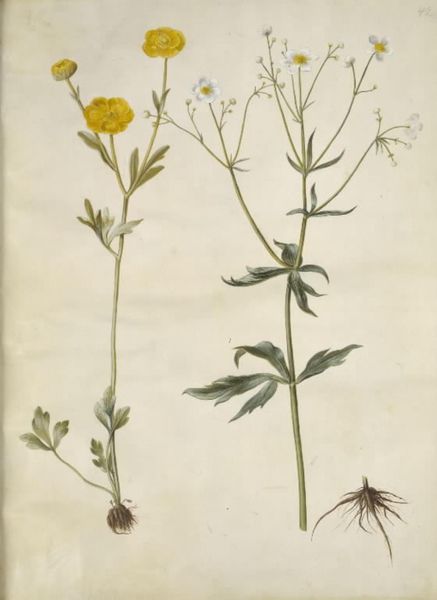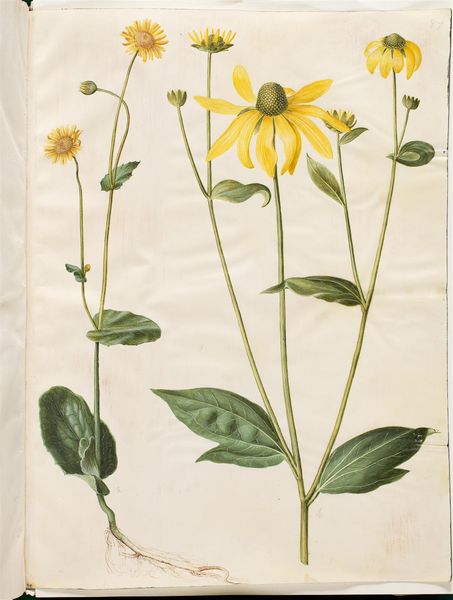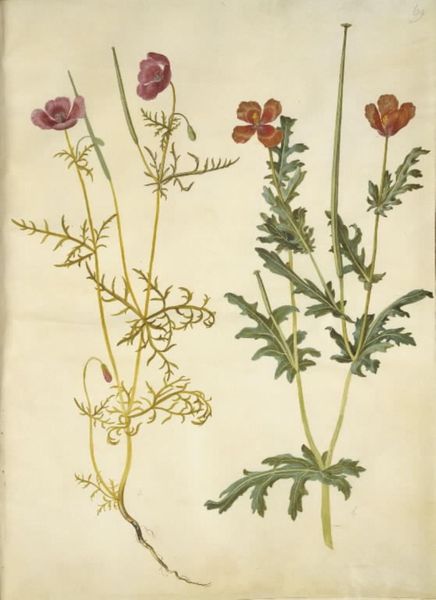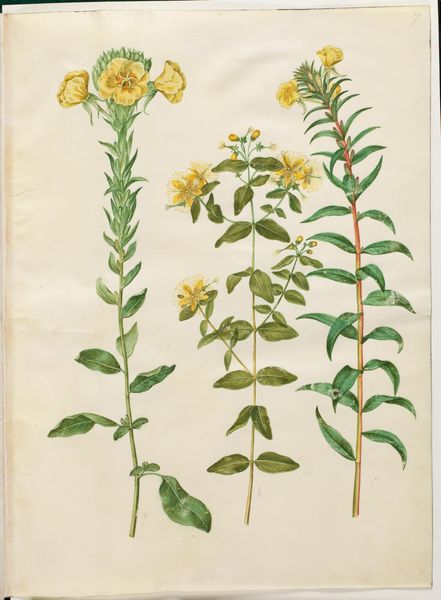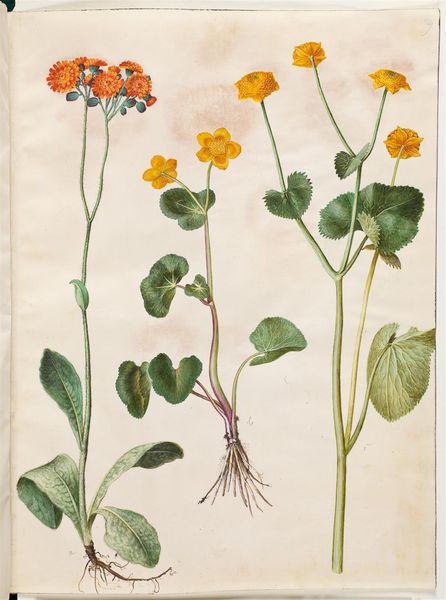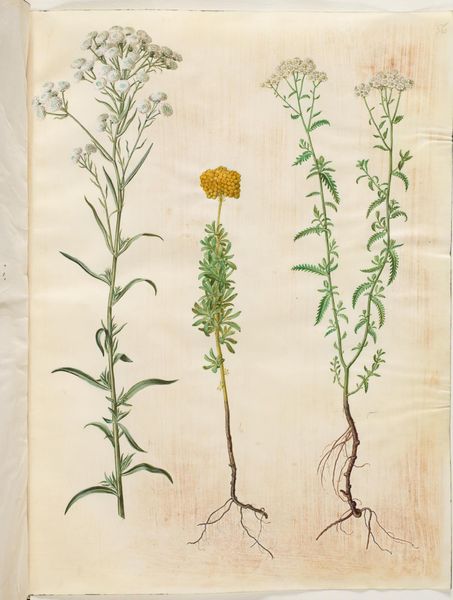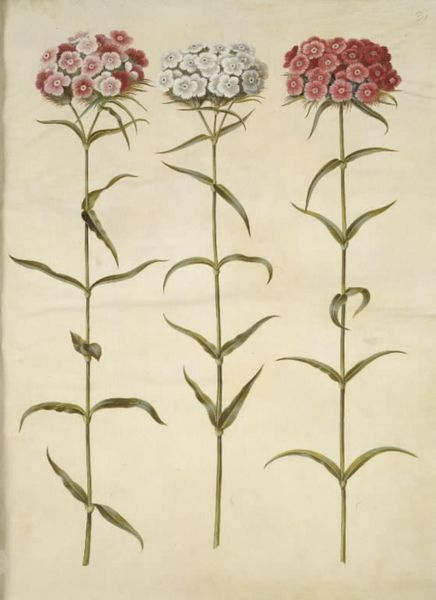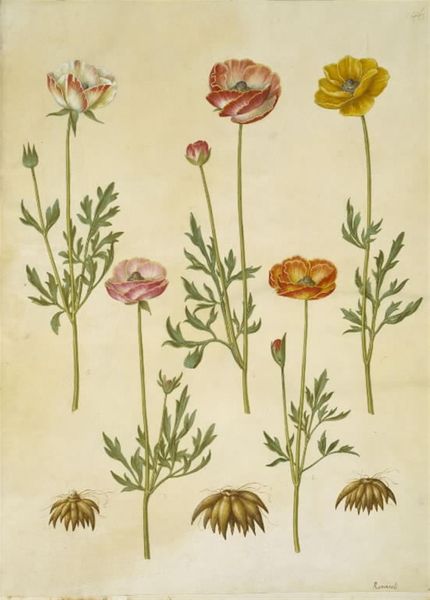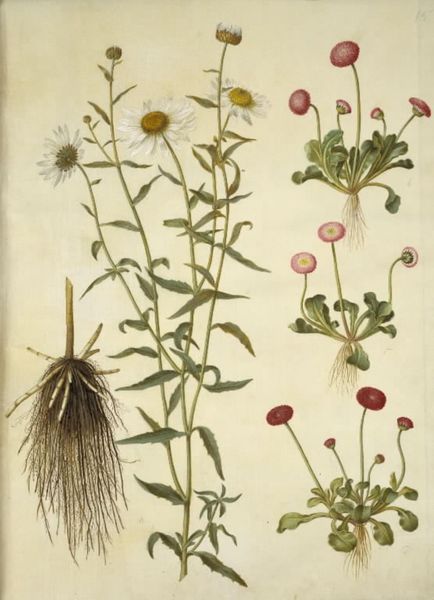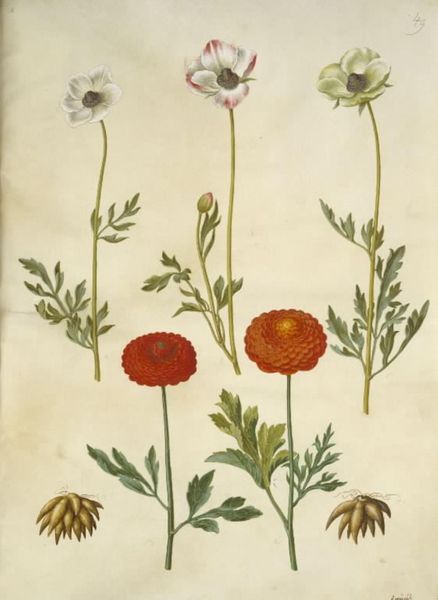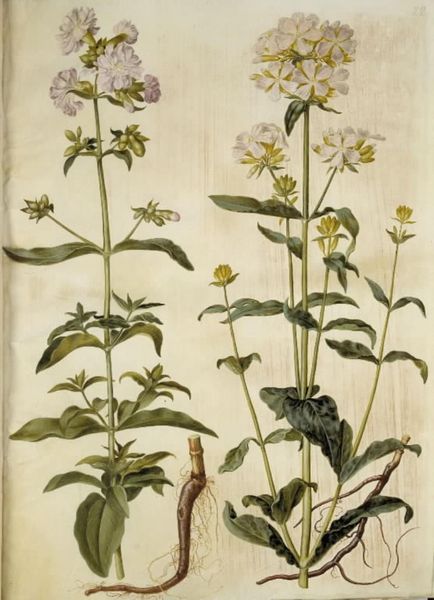
drawing, gouache, watercolor
#
drawing
#
gouache
#
watercolor
#
watercolour illustration
#
botanical art
#
watercolor
#
realism
Dimensions: 505 mm (height) x 385 mm (width) (bladmaal)
Curator: Here we have a delicate botanical study, Glaucium flavum (strand-hornskulpe), created between 1649 and 1659. It's a watercolour and gouache drawing by Hans Simon Holtzbecker. Editor: It strikes me as surprisingly somber for a botanical illustration. The yellow flower offers a moment of brightness, but the almost metallic blue-grey leaves... they speak of a colder, harsher landscape. Curator: Indeed. Consider the means of production. Botanical illustrations like this one served specific purposes: scientific documentation and, often, medicinal study. Holtzbecker meticulously captured the details of the plant’s morphology for accurate reproduction and further study. The very choice of watercolor, layered with gouache, speaks to precision. Editor: But there's more here than just objective representation. The strand-hornskulpe, found on seashores, would likely have carried specific symbolic weight. Its resilience, its ability to thrive in a liminal zone between land and sea... that's a powerful visual metaphor. Yellow itself represents a solar, warm, benevolent spirit that grows in an area so desaturated and cool. It feels spiritual in that respect, Curator: That's interesting. From my perspective, I see Holtzbecker working with a limited palette. It wasn't simply about making it pretty, but perhaps reflecting the actual pigment sources available and the artist’s ability to render with scientific accuracy, even beauty. The use of light and shadow creates a kind of almost metallic look as a way of highlighting structure for scientific purposes. Editor: I can agree with you that he is using the color, or lack thereof, to give it some extra dimensions but his control is what creates it and the symbolic understanding of nature. But if we dig deeper into the visual history, certain plants were associated with specific virtues, medicinal properties, or even magical qualities. Was this strand-hornskulpe believed to hold particular powers? Curator: I think to focus too much on magical symbolism will distract people, perhaps, but I will grant that a deeper context of 17th-century pharmacology would provide an additional understanding here. These illustrators were also crafts people in that way: laborers. Editor: Well, it all connects, doesn't it? Material realities, the crafting of images, and the symbolic meanings we project onto the world. A fascinating piece all around. Curator: Absolutely, seeing it that way, this allows us to observe this art in different dimensions for greater comprehension and contextual information.
Comments
No comments
Be the first to comment and join the conversation on the ultimate creative platform.


